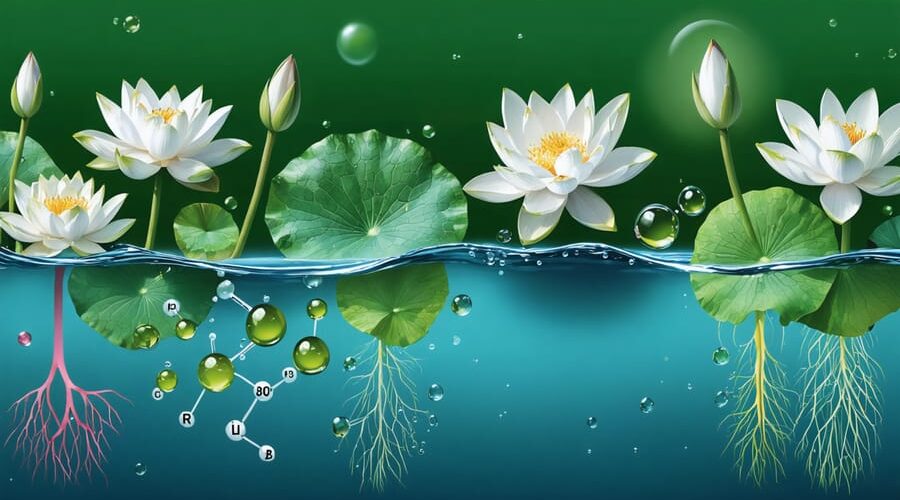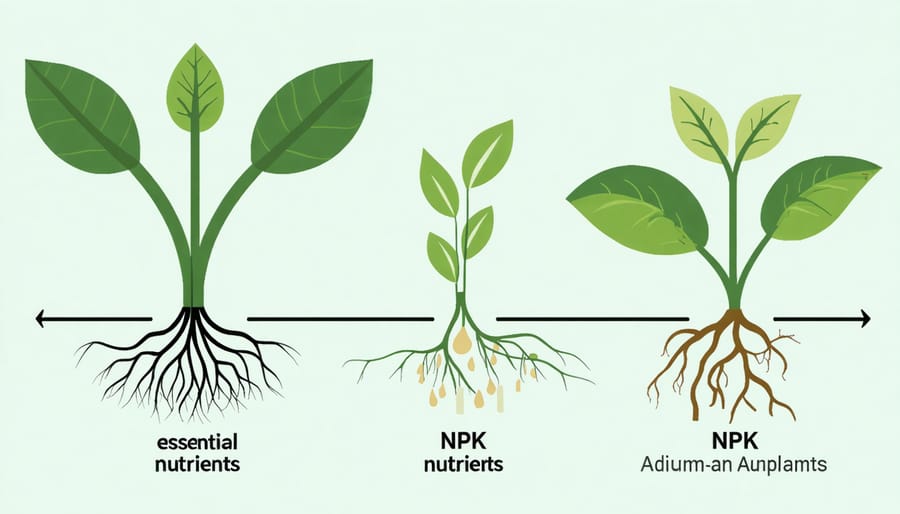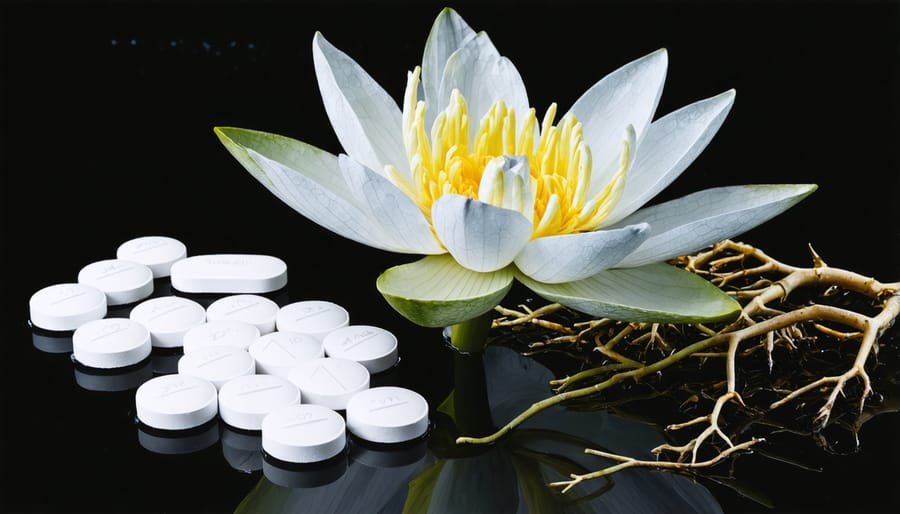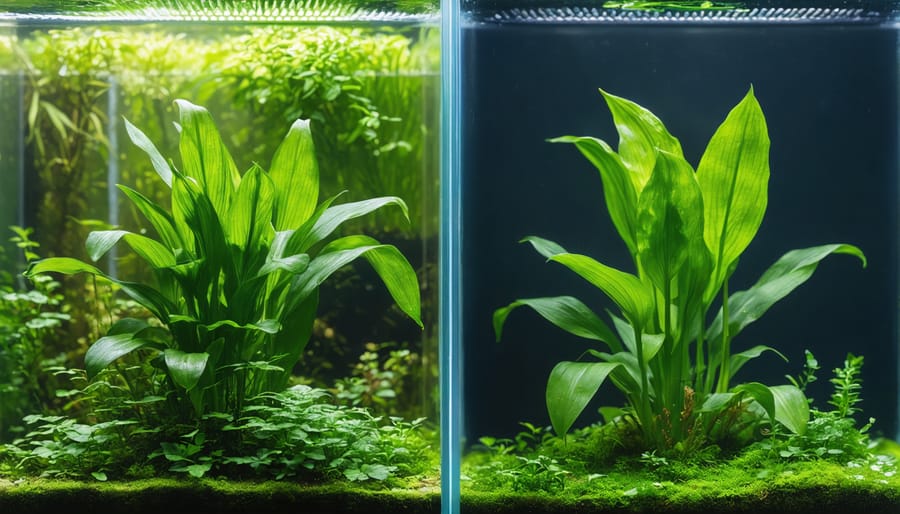
Feed Your Water Garden Right: Perfect Nutrients for Thriving Aquatic Plants
Nourish your essential aquatic plants with a balanced blend of nitrogen, phosphorus, and potassium to promote vibrant growth and flowering. Feed water lilies and deep-rooted species using slow-release fertilizer tablets pressed directly into the soil, ensuring nutrients reach the root zone. Supplement floating plants like water hyacinths with liquid fertilizer diluted to half-strength, applying directly to foliage during active growing seasons. Monitor nutrient levels monthly using simple test strips to prevent algae blooms while maintaining optimal plant health.
Unlike terrestrial gardens, water gardens require specialized nutrient management to maintain crystal-clear water and thriving plants. The key lies in understanding the delicate balance between feeding your aquatic plants and preventing excess nutrients from fueling unwanted algae growth. Whether you’re nurturing delicate floating plants or robust marginals, proper nutrition transforms an ordinary water feature into a flourishing aquatic ecosystem.
Essential Nutrients Your Water Plants Need
Macronutrients (NPK)
Just like us, water plants need their main food groups to thrive, and NPK nutrients are the big three they can’t live without. These macronutrients – nitrogen (N), phosphorus (P), and potassium (K) – each play vital roles in keeping your aquatic plants healthy and beautiful.
Nitrogen is the growth champion, helping plants develop lush, green foliage. In water gardens, plants typically get nitrogen from fish waste and decomposing organic matter, but they might need an extra boost during the growing season. Watch for yellowing leaves – that’s often a sign your plants are asking for more nitrogen.
Phosphorus is the energy powerhouse that supports strong root systems and promotes flowering. Without enough phosphorus, your water lilies might be shy about blooming, or your lotus might produce smaller flowers than usual. This nutrient is especially important during the blooming season when plants need extra energy to produce those gorgeous flowers.
Potassium helps plants resist disease and supports overall plant strength. Think of it as your plants’ immune system booster. It’s particularly important in water gardens where plants need to stand up to wind and water movement. You’ll know your plants might be low on potassium if you notice weak stems or brown leaf edges.
When adding these nutrients to your water garden, always start with small amounts and monitor your plants’ response. Too much of a good thing can lead to algae problems, so it’s better to feed gradually than to overdo it.

Trace Elements
Just like vitamins in our diet, trace elements play a vital role in keeping water plants healthy and vibrant. Iron is perhaps the most crucial micronutrient, helping plants maintain their lush green color and produce energy through photosynthesis. When plants lack iron, their leaves often turn yellow while the veins remain green – a telltale sign that it’s time to supplement.
Manganese works alongside iron to help plants process nutrients and develop strong root systems. Other essential trace elements include zinc, which aids in growth hormone production, and copper, which supports healthy stem development. Boron and molybdenum, though needed in tiny amounts, are necessary for overall plant health and flowering.
Most quality aquatic plant fertilizers already contain these trace elements in the right proportions. However, if you notice signs of deficiency, like yellowing leaves or stunted growth, you might need to add a specific trace element supplement. Always start with small doses and observe your plants’ response, as too much of these micronutrients can be just as harmful as too little.
For the best results, test your water regularly and maintain consistent fertilizing schedules. Your water plants will reward you with robust growth and beautiful blooms.
Feeding Different Types of Water Plants
Floating Plants
Water lilies and lotus are the crown jewels of any water garden, and their nutrient needs reflect their majestic status. These floating beauties are heavy feeders, requiring a rich blend of nutrients to produce those stunning blooms and vibrant pads.
For optimal growth, these plants need a balanced fertilizer with an NPK ratio of 10-15-10 or similar. The higher phosphorus content (the middle number) promotes abundant flowering, while nitrogen and potassium support healthy leaf development and overall plant vigor.
The best way to feed these floating plants is through fertilizer tablets pressed directly into their planting containers. Start feeding in early spring when new growth appears, and continue monthly throughout the growing season. For established plants, use about 2-3 tablets per container, depending on pot size.
One common mistake is overfeeding – remember that excess nutrients can lead to algae problems. It’s better to slightly underfeed than overfeed. Watch your plants for signs they need more nutrients: yellowing leaves, fewer flowers, or stunted growth are all indicators it’s time for feeding.
For the best results, combine regular fertilization with proper soil preparation. Use heavy garden loam mixed with a small amount of well-aged compost, and top with gravel to prevent soil from floating away.
Marginal Plants
Marginal and bog plants add wonderful diversity to your water garden, and their nutrient needs are quite unique. These plants grow in shallow water or consistently wet soil around the pond’s edge, requiring a different feeding approach than deep-water species.
Most marginal plants thrive with a balanced, slow-release fertilizer mixed into their planting soil. Look for products with an NPK ratio of 5-5-5 or 10-10-10, which provide steady nutrition without the risk of excess nutrients leaching into the pond. When planting, mix the fertilizer tablets or granules directly into the soil, keeping them away from the plant’s crown to prevent burning.
These plants are typically heavy feeders during the growing season. Apply fertilizer in spring when new growth appears, and again mid-summer to maintain vigorous growth. However, reduce feeding as autumn approaches to help plants prepare for winter dormancy.
Common marginal plants like iris, cattails, and rushes benefit from monthly feeding during peak growth. For flowering species like lotus-like water lilies and pickerelweed, using a slightly higher phosphorus fertilizer can encourage better blooming.
Remember that marginal plants in containers may need more frequent feeding than those planted directly in bog areas, as nutrients can become depleted more quickly in confined spaces. Always monitor plant growth and leaf color – yellowing leaves often indicate it’s time for a nutrient boost.
Smart Fertilizing Techniques
Tablet vs. Liquid Fertilizers
Both tablet and liquid fertilizers have their place in water gardening, and choosing between them often depends on your specific needs and gardening style. Tablet fertilizers are convenient, long-lasting options that slowly release nutrients into the water over time. Simply push them into the soil near plant roots, and they’ll feed your aquatic plants for several weeks to months. They’re particularly effective for heavy feeders like water lilies and lotus plants.
Liquid fertilizers, on the other hand, provide immediate nutrient availability and are perfect for quick results. They’re easily absorbed by plants and allow for precise dosing, making them ideal for smaller ponds or container water gardens. You can also adjust the concentration based on your plants’ specific needs throughout the growing season.
Consider using tablets for established plants that need consistent feeding, while liquid fertilizers work best for young plants or those showing signs of nutrient deficiency. Many experienced water gardeners actually combine both methods – using tablets as a base fertilizer and supplementing with liquid fertilizers during peak growing periods or when plants need an extra boost. Just remember to always follow the package instructions to avoid over-fertilization.

Application Timing
The timing of nutrient application varies depending on your water plants’ growth patterns and seasons. For most aquatic plants, the active growing season begins in spring when water temperatures reach about 50°F (10°C). Start fertilizing when you notice new growth emerging.
During the peak growing season (late spring through summer), floating plants and water lilies benefit from fertilization every 2-4 weeks. Marginal plants typically need nutrients monthly, while submerged plants usually require less frequent feeding, about every 6-8 weeks.
Reduce fertilization as fall approaches and stop completely when plants show signs of entering dormancy. Hardy water plants don’t need feeding during winter months when growth naturally slows or stops.
For potted aquatic plants, incorporate slow-release fertilizer tablets into the soil when replanting or dividing, typically in spring. Surface-floating plants like water lettuce or hyacinth can receive liquid fertilizer diluted to half strength every 3-4 weeks during active growth.
Remember to observe your plants’ response to feeding. Yellowing leaves often indicate nutrient deficiency, while excessive algae growth might mean you’re over-fertilizing. Adjust your feeding schedule based on these visual cues and your local climate conditions.

Common Nutrient Problems and Solutions
Even the healthiest water gardens can sometimes face nutrient-related challenges. Learning to spot and fix these issues early can help prevent them from turning into more serious common pond diseases.
Yellow or pale leaves often signal nitrogen deficiency, which is easily fixed by adding a balanced aquatic fertilizer. If you notice stunted growth and darker green leaves with purple tinges, your plants likely need more phosphorus. A quick solution is using a phosphorus-rich fertilizer tablet placed near the plant roots.
Excessive nutrients can be just as problematic. When you see abundant algae growth, it’s usually a sign of too much nitrogen and phosphorus in the water. Combat this by reducing fertilizer use, removing fallen leaves promptly, and adding more floating plants to absorb excess nutrients.
Brown leaf edges might indicate potassium deficiency, while twisted or curled new growth could mean your plants lack calcium. Both issues can be addressed with specific nutrient supplements designed for aquatic plants.
Keep an eye out for these warning signs:
– Yellowing between leaf veins (iron deficiency)
– White or pale new growth (zinc deficiency)
– Leaves dropping prematurely (magnesium deficiency)
– Algae overgrowth (nutrient excess)
The key to preventing nutrient problems is regular testing and maintenance. Test your water parameters monthly and adjust fertilization accordingly. Remember that different seasons affect nutrient needs – plants typically require more nutrients during active growth periods in spring and summer, and less during dormant winter months.
If you’re unsure about your plants’ nutrient status, start with a half-dose of fertilizer and observe the results. It’s easier to add more nutrients than to remove excess ones from your water garden.
Maintaining proper nutrition for your water garden plants is crucial for creating a thriving aquatic ecosystem. Throughout this guide, we’ve explored the essential nutrients that water plants need to flourish, from primary macronutrients like nitrogen, phosphorus, and potassium to vital micronutrients such as iron and manganese.
Remember that different types of water plants have varying nutritional needs. While floating plants primarily absorb nutrients directly from the water, marginal and deep-water plants often benefit from substrate fertilization. The key to success lies in finding the right balance – too little nutrition leads to stunted growth and pale foliage, while over-fertilizing can trigger algae blooms and harm your aquatic environment.
Regular monitoring of your plants’ health, along with careful observation of leaf color and growth patterns, will help you adjust your fertilization routine accordingly. Start with recommended dosages and adjust based on your plants’ response. Don’t forget that seasonal changes affect nutrient requirements, with most plants needing more nutrients during the active growing season.
By providing the right nutrients in appropriate amounts, you’ll be rewarded with vibrant blooms, lush foliage, and a beautiful water garden that brings joy throughout the seasons. Remember that successful water gardening is about patience and consistent care – take time to understand your plants’ needs, and they’ll reward you with their natural beauty.
